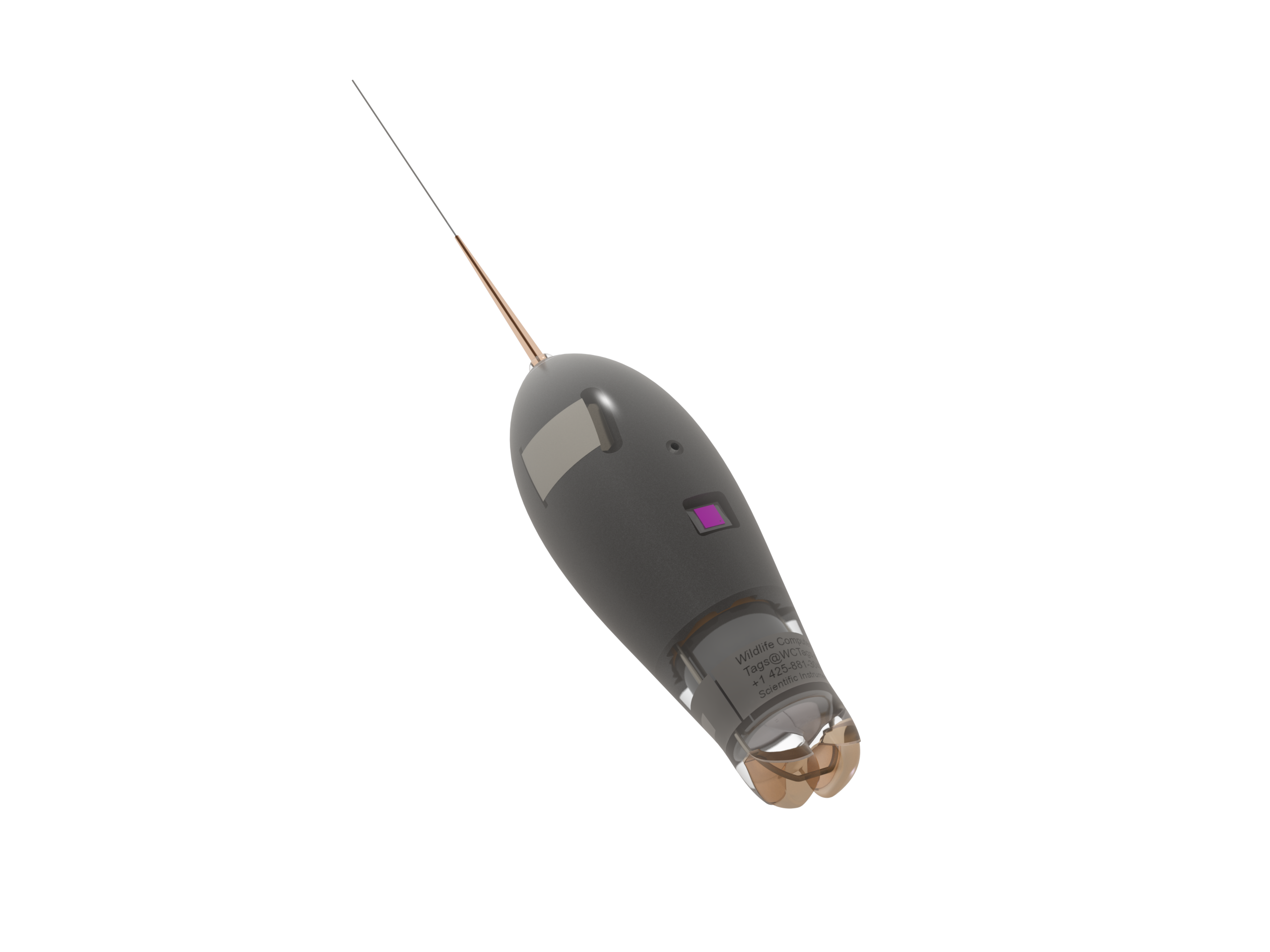Introducing the microPAT (yes! with a small m ’cause it’s micro), the smallest geolocating satellite pop-up tag on the market. This little tag weighs in at 46 grams and 96 mm (length) x Ø 33 mm (diameter).
The microPAT is used to track the behavior and migration of marine animals. The microPAT has archiving capabilities, a corrodible attachment link, and functions as an Argos transmitter.
Throughout deployment, the microPAT collects depth, wet/dry, temperature, and light-level data, archived in the onboard memory. Then, on a preset date or duration determined by the researcher, the tag releases from the animal and floats to the surface. The archived data are then summarized and uploaded via the Argos satellites.
Engineered with a keen focus on reliability, ruggedness, and user-friendly operation, the microPAT boasts a stable, low-drag shape
and a robust urethane nose.

A Deeper Look at the Data Products
- Empirical Cumulative Distribution (ECD)—ECD of depths including the minimum and maximum depths encountered, and the depths above which (i.e., shallower than) the animal spends 25%, 50%, and 75% of its time during fixed 6-hour summary periods. For each ECD depth, the tag also provides the maximum temperature encountered during the summary period, providing a temperature profile of the water column. These are behaviorally driven temperature profiles.
- Time-Series—limited depth and temperature time series provides low-frequency reporting of sensor data for instruments that may never be recovered. Each depth and temperature time series message contains time series data sampled at a fixed 600 seconds for the end and/or beginning of the deployment, depending upon the deployment duration.
- Locations—after the microPAT releases from the animal, it generates Argos locations that, along with light and surface data, are GPE3 compatible.
- Archive—depth, temperature, wet/dry, and light-level readings are stored. When a microPAT is recovered, the full archive is available for download.
Key Benefits of microPAT
- The smallest pop-up tag available for tracking movements of small epipelagic fish for deployment durations up to one year.
- GPE3 compatible—uses known locations, light, sea-surface temperature (SST), bathymetric, and land-avoidance observations to estimate locations.
- Uses proven technologies based on the MiniPAT for recording and transmission of position, depth, and temperature data.
Data Products
- Light-Level Geolocation (GPE3)
- Argos Locations (Post-Release)
- Empirical Cumulative Distribution (ECD) of Depth
- Temperature at ECD Depths
- Depth Time Series (Limited)
- Temperature Time Series (Limited)
- Depth Archive (Pressure)
- Temperature Archive
- Light Archive
- Wet/Dry Archive
User Guide/Software
This user guide gives you all the essential information needed for interacting with, configuring, and deploying this tag.
USB Communications Cable Driver – 29-March 2023
Driver for the Wildlife Computers USB Communications cable.
Administer settings to your tag.
A statistical model for estimating animal movements. GPE3 is an integrated component of the Wildlife Computers Data Portal and runs exclusively on our servers.
Specifications
Below are the physical specifications of the MiniPAT. A full description of the features is available on the downloadable MiniPAT Product Features (PDF).
| Attachment Type | Towed |
| Sensors | Wet/Dry, Depth, Temperature, Light |
| Depth Sensor Range | 0-2000 m |
| Depth Sensor Resolution | 0.061 m (dBar) |
| Depth Sensor Accuracy | 1% of reading (typical), 3% FS (maximum) |
| Temperature Sensor Range | -40° C to 105° C |
| Temperature sensor Resolution | 0.05° C |
| Temperature Sensor Accuracy | ±0.1° C |
| Conductivity Operational Limits | 0.1 to 5 S/m |
| Light Sensor | 5 x 10-12W.cm-2 to 5 x 10-2W.cm-2 |
| Operating Temperature Rating (°C) | -20° C to 50° C |
| Optimal Storage Temperature Range (°C) | 0° C to 5° C |
| Pressure Rating | 2000 m |
| Memory | 16 MB |
| Dimensions | 96 mm (length) x Ø 33 mm (diameter) |
| Weight in Air | 46 g |
| Maximum Deployment Length | 365 days |
